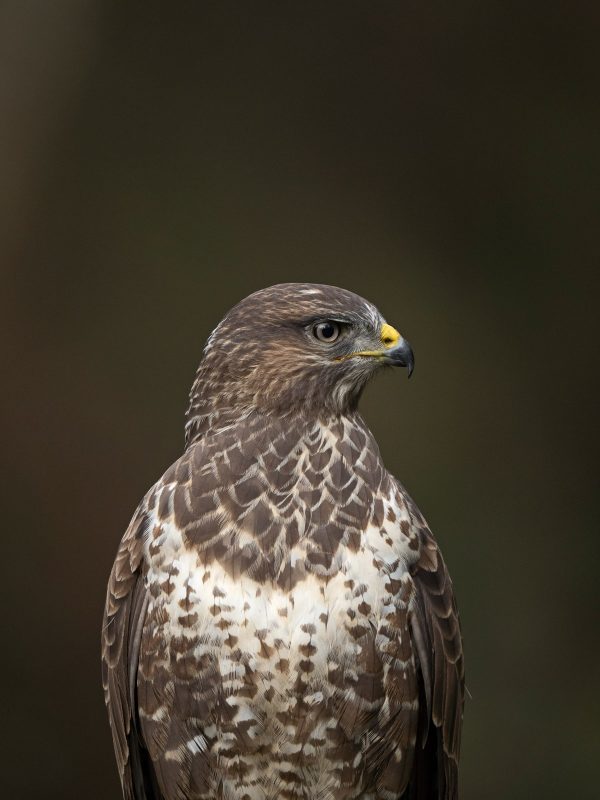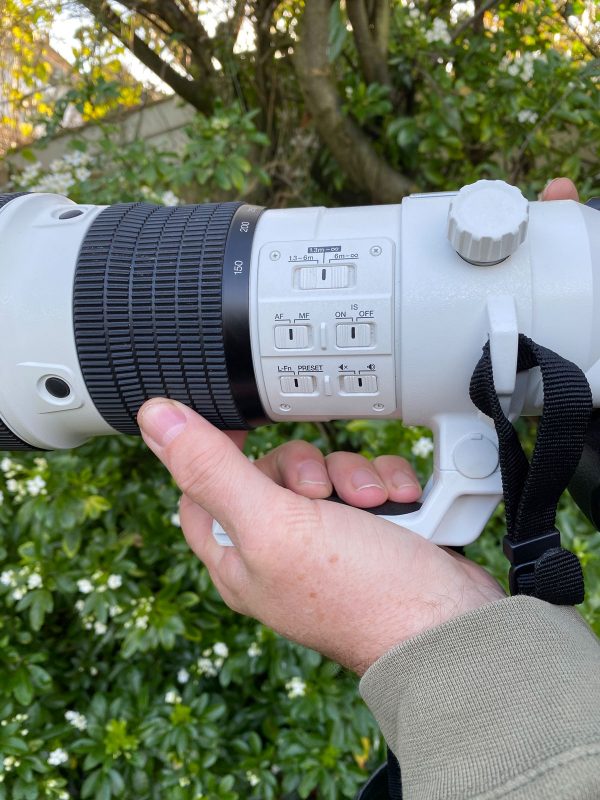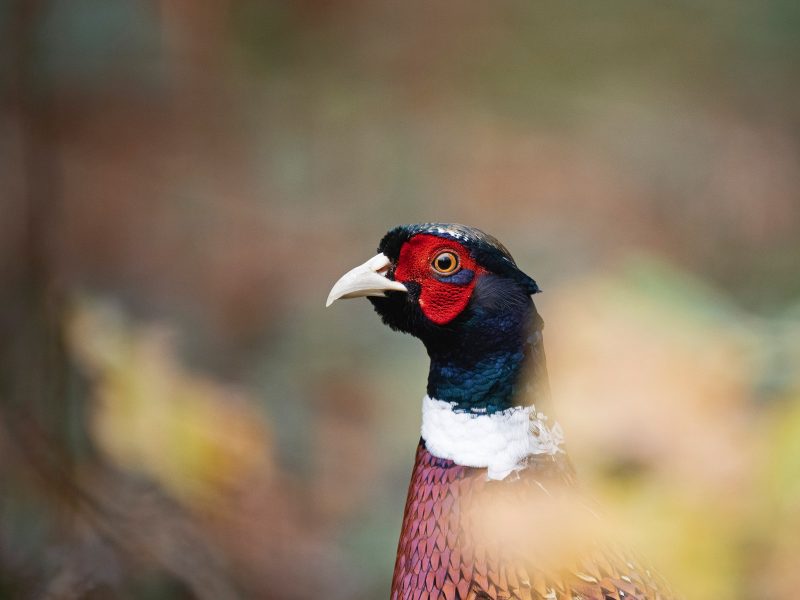Olympus 150-400mm f/4.5 Lens Review for Wildlife Photography

So, it is finally here, the lens many wildlife photographers with Olympus gear have been waiting for. We have known for a very long time this lens was just over the horizon. This is my review of the Olympus M.Zuiko Digital ED 150-400mm f/4.5 TC1.25X IS PRO lens – phew, that is quite the mouthful.
I was lucky enough to use the new Olympus 150-400mm lens recently for a week and put it through its paces. With movement limited this year, and the fickle November weather, my opportunities were a bit limited – but I managed to get out most days to sites close to where I live in north Norfolk. This included some opportunities to photograph birds, and a couple of visits to my local grey seal colony.
Handling, build & ergonomics
Finished in bright white, the lens’ aesthetics mean that you will want a lens coat for some degree of camouflage. Indeed, when I buy one I might be brave enough to get the green spray can out. It is certainly not the colour a wildlife photographer would want.
Olympus say the white, heat-resistant coating is designed to reflect infrared sunlight to help keep optical performance consistently high in hot temperatures. But this is perhaps only relevant to a small number of users.

The lens balances beautifully with the Olympus EM1X, and I also used it with the much smaller OMD EM1 MK3. I got used to this combination quickly, but because of the much smaller and lighter body it did not feel so well balanced.
The lens is 31cm long and weighs just 1.8 kg. When coupled with the EM1X, the overall weight is just 2.8 kg. I found this to be comfortable to hand-hold while photographing all day. Some photographers might find using a monopod useful, especially when using higher magnifications of 1000mm and beyond.

Olympus state that the lens is weatherproof and my experience of other weather sealed lenses, including the 100-400 mm zoom from Olympus, means you don’t need to worry if you get caught in a downpour with no cover.
The surprisingly lightweight lens is achieved by utilising magnesium-alloy, reinforced plastics, and a carbon fibre detachable hood that can be stored inverted on the lens as is typical of many makers of long telephotos.

When zooming, balance is maintained by an internal zoom system so that the lens barrel does not move in or out. The whole zoom range can be reached in just a quarter of a turn around the barrel; this is really useful if you need to zoom in or out quickly while shooting.
A fixed f/4.5 aperture is achieved throughout the zoom range, and is increased to f/5.6 when using the built-in 1.25x teleconverter.
When extending reach by deploying the built in 1.25 X teleconverter, you simply flick a lever on the right side of the lens barrel which makes a reassuring clunk. The lever is perfectly positioned so you can do this while keeping your eye to the camera.
Another positive for me is the design of the tripod foot, which when handholding allows you to rest the foot in the palm of your hand and zoom in and out with your thumb. Both operations make zooming seamless when you have a subject in front of you.

Another nice touch is the design of the tripod collar. If you are set up on a tripod shooting in landscape format and want to switch to portrait, when you rotate the lens it will click into position – so no need to double check to ensure everything is levelled out.
On the left of the barrel are the various switches for focus limiters, the AF / MF switch, on / off for IS and preset switches which work in tandem with the preset buttons on the lens.
The internals are complex with 28 elements in 18 groups, and Olympus have deployed their Z Coating Nano to reduce ghosting and flare, which is important if you shoot into the light a lot.
Performance
So how does it perform? First off I should say that throughout my week shooting with this lens I took everything handheld. One of the attractions for me switching to Olympus three years ago was the light, small package and the ability to discard the tripod unless I was sitting in a hide. The size does move you back to the look of a DSLR outfit, but not the weight.
Here are some sample images to take a look at:





I found the EM1X combined with the Olympus 150-400mm lens posed no problems to handhold. Yes, it’s a bit heavier than holding the 300mm f/4 Pro but on the EM1X it balances so well that the weight is taken in your shooting hand.
With the lighter MK3 body the opposite was true, and I found it a little less comfortable. So, if I were to use one of the smaller Olympus bodies with this lens I think I would add a battery grip to assist in the overall balance.

The Olympus system is made for hand holding due to their image stabilisation systems in both cameras and lenses, which work in tandem. The combination of EM1X and the 150-400mm lens boasts an impressive 8 stops of stabilisation at 150mm, although this reduces at the longer focal lengths but is still impressive enough to be able to handhold down below 1/60th sec and get tack sharp images.
The first shot I took was with the Olympus 2x teleconverter (alongside the 1.25x), giving me 1000mm and the shutter speed was 1/60th sec. Out of a burst of 10 images, 6 were pin sharp.

Autofocus
Autofocus was excellent, and I could detect a slightly snappier performance compared to my 300 mm f4 Pro lens. There seemed to me to be no loss in performance when the built in converter was deployed.
Where I did on occasions struggle was when using the 2X teleconverter (MC-20) and built-in converter at the same time, so giving me 1000mm at f/11. Then, in low contrast situations, it hunted a little and was sluggish, but you might expect this when you consider how much glass you are utilising.

In good contrast situations, the autofocus was a bit slower than without the 2x converter but still fast enough to lock on to fast flying wigeon, golden plovers, and running roe deer – so this extreme focal length opens up many opportunities.
I found, when working in the seal colony, that I could stay put in one place since I was able to shoot with such a great focal range. The lack of movement can in fact expand your creative opportunity, since you can react fast to a changing situation without having to try and move closer or swap lenses.

My style of photography often involves shooting into the light. The lens is superb at handling this, and I suffered no flare or ghosting. One of the joys of having the great reach at my disposal was to get in really tight on the backlit whiskers of seals.

I’m not a fan of graphs and charts to illustrate how sharp a lens is. All you need to know is that this lens is a match for anything else I’ve used, and most importantly it’s sharp with the 2x teleconverter at 1000 mm.
It’s not quite as crisp as when using just the built-in converter, but the drop-off in quality is not obvious unless you really go looking for it. I think the accompanying images here speak for themselves.
In conclusion
If you are a professional or very keen amateur that spends a lot of time shooting wildlife and use the Olympus system, then this lens is a game changer. Olympus have produced a lens of such high performance and versatility that it surpassed my expectations.
No other manufacturer can offer the full-frame sensor equivalent of 300mm to 2000mm (alongside the 2x converter) reach in a single package. To have a lightweight 1000mm equivalent f/5.6 lens is I believe a big lure to those who still shoot with DSLR’s and heavy lenses. For sure, you can shoot with a full-frame camera using an 800mm and converter and crop in 50% to get a similar result – but the big difference is the weight and size of the outfit you are carrying around, as well as the cost.
I have heard a few grumbles from people regarding price of £6,500, yet this is half the price of the Canon 800mm f/5.6 lens.

There is one more thing to consider. A full-frame camera at 1000mm and f/5.6 gives you a very narrow depth of field. The smaller sensor of the Olympus in effect gives you something comparable to f/11, yet still giving a lovely bokeh. This is a point that is often overlooked when comparing 35mm sensors to Micro Four Thirds.
This is a big step for Olympus to produce a lens that really stands apart from the rest of its line-up. It’s a bit like slipping a Ferrari into a garage of Vauxhall Astras. The Astras are safe, dependable, and do a great job from getting you from A to B – but the Ferrari, well, it’s that highly desirable head-turner that is nimbler and quicker.
That is why I will be buying this lens. It allows very fast composition adjustments, changing the perspective of a picture in an instant. That leads to more efficiency and creativity, and the knowledge that when I go out I’m ready for anything.










